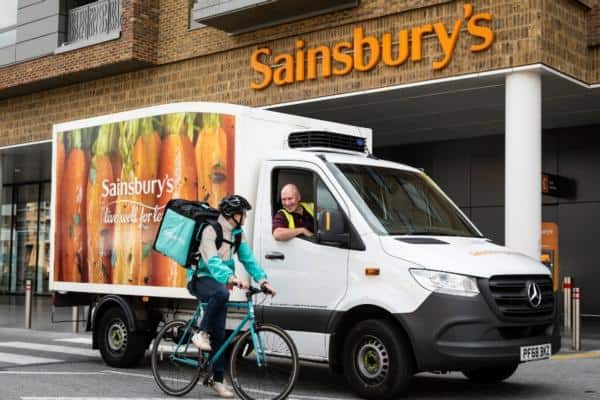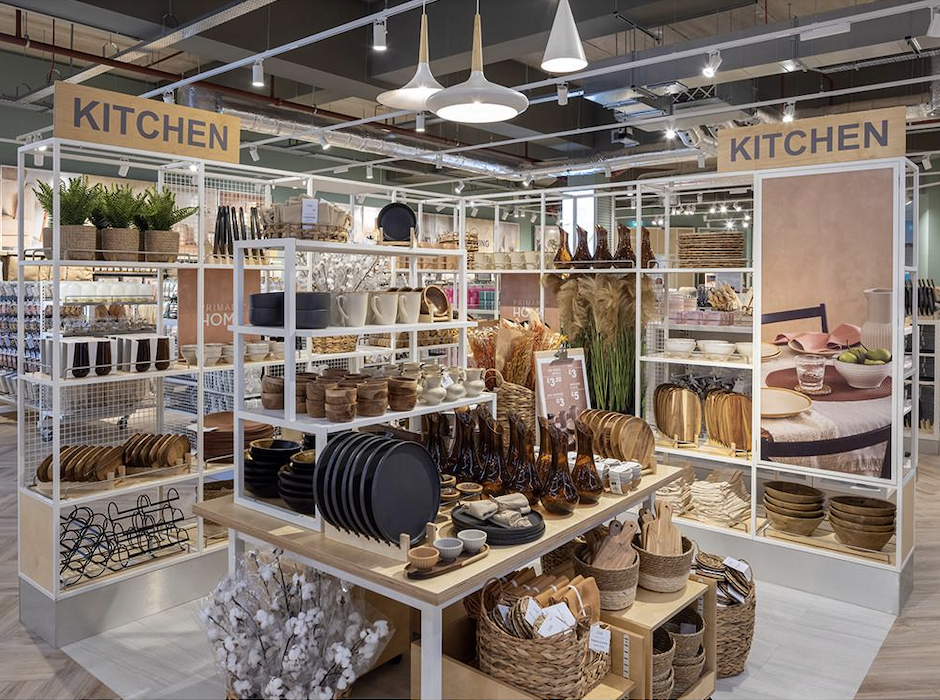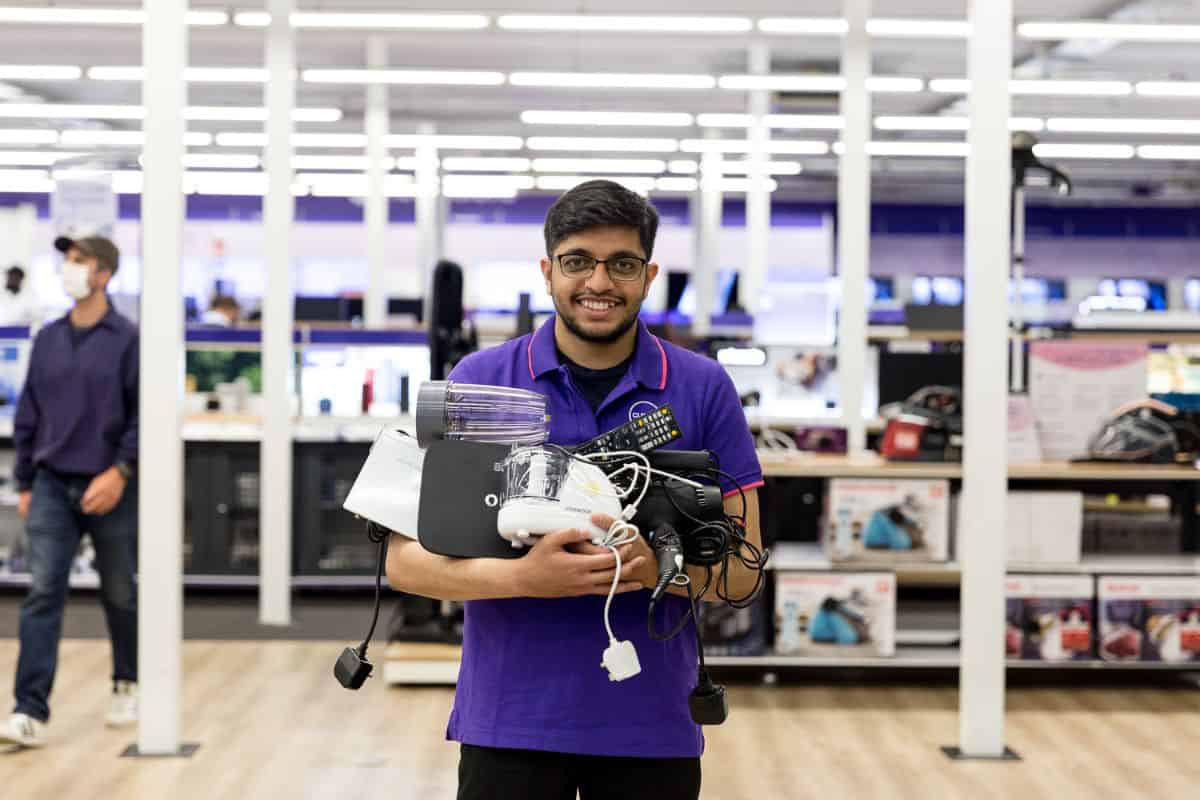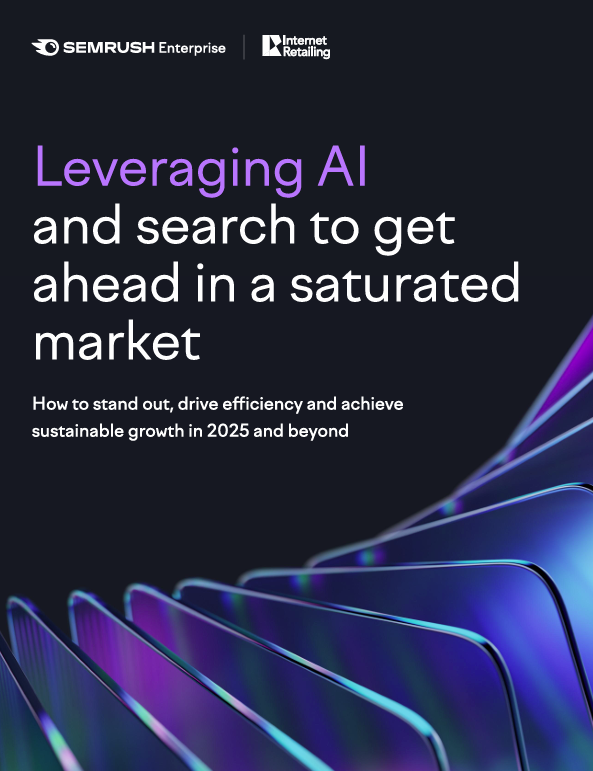Thirty-nine per cent of Sainsbury’s sales took place online in its latest financial year – up from 23% two years earlier.
Online grocery sales made up 17% of food sales, while 80% of Argos sales are online, up from 63% two years earlier. Sainsbury’s says that customer behaviour is returning to pre-pandemic patterns – with shoppers buying in-store but ordering online for home delivery or collection at double the level seen before Covid-19. An average of 690,000 online grocery orders were placed each week during the year. Some 130,000 orders a week were delivered via fast delivery services in the fourth quarter.
Sainsbury’s online groceries
Sainsbury’s saw an average of 690,000 online grocery orders placed each week during the year, and the Sainsbury’s says it is now the second largest online grocery retailer, up from fourth before the pandemic. “This scale gives us advantage,” it says in today’s full-year figures. “We have improved profitability by enhancing picking rates and van utilisation. We are exploring new ways to make our delivery services better for customers and more efficient.” Some £50m is expected to be saved by proving pick rates and using a more efficient routing system.
During the year Sainsbury’s relaunched its same-day grocery service in 284 shops and continues to grow its fast delivery services. An average of 130,000 orders a week were delivered in as little as 30 minutes from 580 shops in the fourth quarter of the year, both through its own Chop Chop service and through partnerships with Deliveroo and Uber Eats.
Argos general merchandise
Argos sales fell by 12.5% on the previous year and 3% on two years ago. The decline, says Sainsbury’s, came as a result of availability issues both because of supply chain disruption and because of its strategic decision to move away from promotions and move out of less profitable categories. Sales of household, home and furniture sales grew while sales of toys, consumer electronics and technology declined. Some 80% of Argos sales now take place online. That’s up from 63% two years earlier and Sainsbury’s says that it is growing its digital presence in order “to serve customers who increasingly want to buy online. As of March 5, there were 728 Argos stores, of which 400 are inside branches of Sainsbury’s. During the year, 73 standalone Argos shops shut, and 64 opened within branches of Sainsbury’s, where 62 in-store collection points also opened.
The retailer says that Argos is now a more profitable business, and it aims to save at least £250m by integrating the Sainsbury’s, Argos and Habitat supply chain and logistics operations. Five local fulfilment centres opened during the year, and nine more are planned this year.
Habitat products are now available online via its own website, via the Argos website and in 600 Sainsbury’s shops.
The figures
Sainsbury’s today reported group revenue – excluding VAT but including fuel – of £29.9bn in the year to March 5 2022. That’s 2.9% up on last year, and 3.1% up on two years ago. Retail sales – excluding fuel but including VAT – of £28.1bn were 2.6% down on last year but 4.6% ahead of two years ago. Within that, digital sales of £10.8bn were 11% down on last time, but 80% ahead of two years ago.
At a category level, grocery sales were down by 0.2% year-on-year while general merchandise sales were 11.9% down. Compared to two years ago, grocery sales were 7.6% ahead, and general merchandise sales were down by 4.6%. General merchandise sales at Argos were down by 12.5% on last year, and by 3% on the year before, while general merchandise sales at Sainsbury’s were 8.6% down on last year and 12% down on the year before. Clothing sales, meanwhile, grew 12.7% on last year and 3.1% on the year before.
Pre-tax profits of £854m recovered from a loss of £164m the previous year and were 207% ahead of two years earlier, when they came in at £278m. Sainsbury’s expects full-year pre-tax profits for its current year to come in at between £630m and £690m.
Sainsbury’s chief executive Simon Roberts says: “In a year of unprecedented change we have been relentlessly focused on putting customers and colleagues first while delivering the first year of our plan to put food back at the heart of Sainsbury’s. We said we would invest in value, innovation and service and that’s exactly what we’re doing.”
The retailer says it is investing both in food prices and customer pay and is working both to help with the humanitarian effort in Ukraine and to manage the impact on supply chains.
“We have a clear long term focus on keeping prices low and we remain committed to helping everyone eat better, whatever the external environment may bring,” says Roberts.
Loyalty
Sainsbury’s says there are now 9.3m digital users of its Nectar scheme, which it now uses to give customers personalised rewards for loyalty. Its My Nectar prices gives customers personally discounted prices that are now used by more than a million customers.
Clothing
Tu clothing sales grew by 12.7% on last year and 3.1% on the previous year to more than £1bn. Some 89% of sales are now full price – up from 65% two years earlier – while it also runs fewer promotions.
Sustainability
Sainsbury’s has brought forward its net zero target for its own operations by five years to 2035. It also aims to reduce its Scope 3 emissions by 30% by 2030. That covers emissions in its own supply chain and the way its customers subsequently use the products it sells. “By delivering against our Scope 3 targets by 2030, we will help customers make more sustainable product choices,” it says.
Sainsbury’s and Argos are both ranked Elite in RXUK Top500 research.









